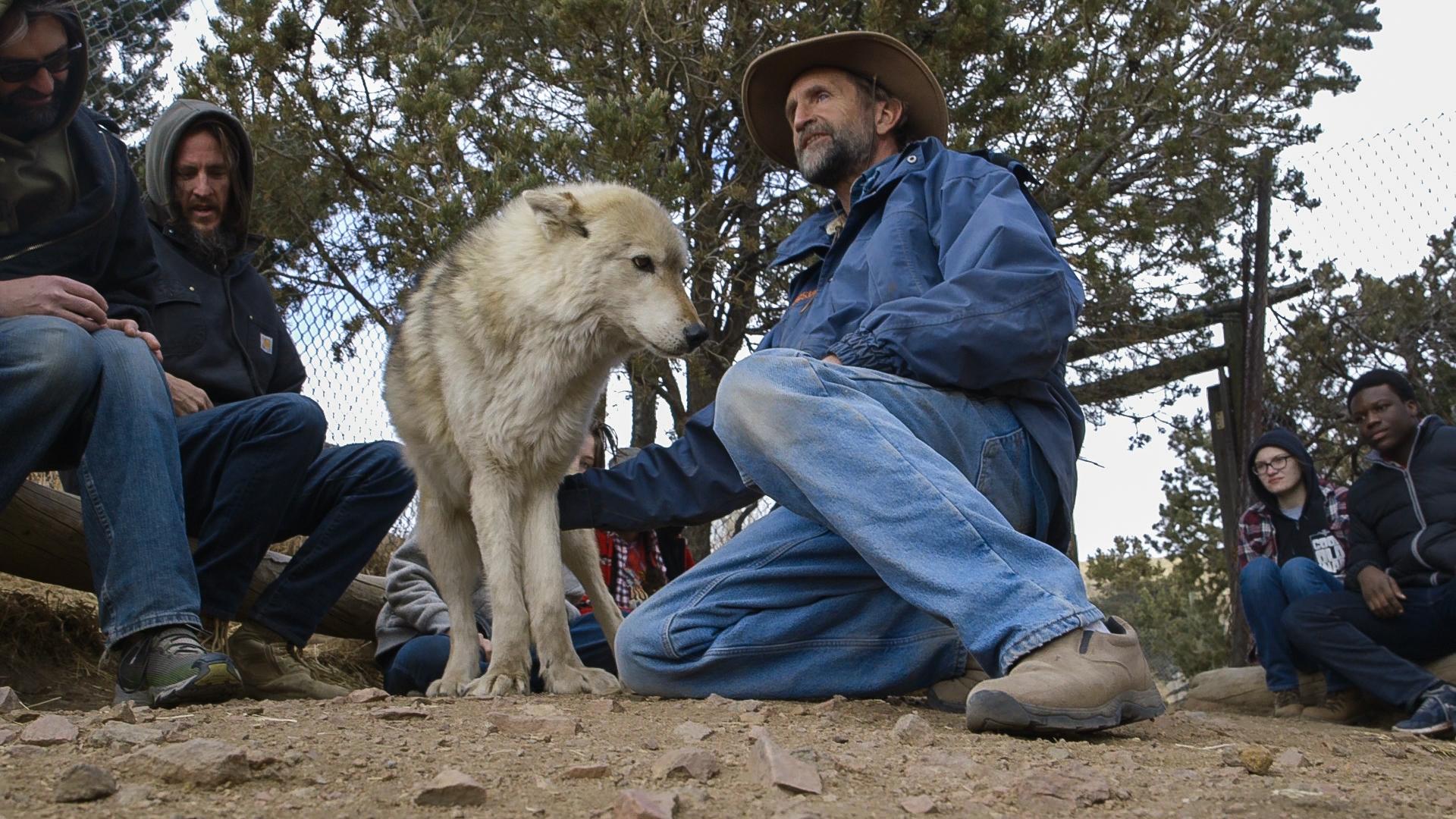

Wolves haven’t roamed wild in Colorado for almost 80 years. But nestled in a forest 45 minutes south of Westcliffe, the sound of a wolf’s howl can be heard echoing off of the mountains.
This howling haven is Mission: Wolf, in operation since 1986 as the longest-running wolf sanctuary in Colorado. Founded by Kent Weber and Tracy Brooks, the sanctuary serves as an education center for anyone who is curious to learn about wolves and wolf-dog crossbreeds.
“Today we have a quarter million wolves living in cages,” Weber said. “Most are dead within two years, because humans cannot take care of them.”
There are an estimated 200,000 wolf-dogs that are euthanized before their third birthday each year. It’s also hard to track that number, as it’s difficult to identify wolf-dogs
“The DNA between a wolf and a dog is so close, that we can't regulate wolf-dogs, because we can't identify them,” Weber said.
Weber believes the idea to crossbreed wolves with man’s best friend first began after a swell in nature films during the 1950-70s, including the works of Jacques Cousteau and James Algar’s documentaries for Walt Disney. The 1960s also marked the lowest point in the United States’ wolf population, with just an estimated 200 left in the lower 48 states. Wilderness conservation was on the front of the public’s mind.
“We know if we want a future, we got to protect nature,” Weber recalled.
The dual phenomenons were also a cauldron for the wolf-dog's popularity problem. Some people interpreted the collective call to action as something other than conservation. A business opportunity in wolf-dog breeding opened up to meet them.
“So now it's replaced with ‘Own a piece of the wild: Wolf puppy for sale.’ And now you got people that breed a wolf with a dog. They want it to look like a wolf and act like a dog,” Weber said.

Mixing wolf and dog DNA is a genetic gamble. Combining opposing wild and domestic behaviors can create a conflicted and confused animal. No litter and no pup turning out the same only raises the unpredictability. These wild behaviors begin to emerge only as wolf-dogs mature. By the time they turn 2 or 3 years old, most are heading toward a death sentence.
“So for two years, people can have this wolf puppy in their house, and it's a great dog, and it acts like the kids, and it plays,” Weber said. “But when that wolf turns from 2 to 3, it's like an adult going from 15 to 21: ‘Don't tell me what to do.’”
It takes a special level of time, land and money to care for a wolf-dog. Most owners are unaware of that commitment when they first purchase their wolf-dog puppy, and decide to surrender the animal. After that decision, the fate of a wolf-dog is bleak.
Animal welfare and management organizations in Colorado are set up for wild animals and for domestic animals, but not for crossbreeds. Wolf-dogs fall through these institutional cracks.
“Now animal shelters manage domestic animals, so if an animal shelter gets in a part wild animal, they can't take it. They have to euthanize it. If the wild animal managers take in a part domestic animal, they can't accept it, it's not a wild animal,” Weber said. “The wolf dog is the only species that falls in this gray area.”

Wolf sanctuaries are the only place for these crossbred dogs to land. But sanctuaries have to set their own maximum intake limit, and are usually at capacity. Mission: Wolf generally houses up to 40 wolf and wolf-dog tenants at any given time.
Places like Mission: Wolf face ongoing issues surrounding conservation by serving to the public as an education and visitor center, not just a sanctuary. Weber believes the best way for people to understand wild animals is to meet a wolf face-to-face (under the guidance of him and his team, of course). The experience is rare opportunity.
“We're working very hard to support the public demand for a connection with nature,” Weber said. “We need to provide natural experiences that support appreciation for ourselves and the world around us. We're at a point in time where now humans are so afraid of nature, that we are being prohibited from touching nature.”
“The day that we're prohibited from interacting with nature, is probably the day we'll lose nature,” Weber said.








